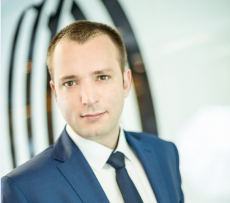
What should be done so that such place could live after working hours and at weekends?
The scope of actions which are aimed at attracting visitors and involving every-day users is practically unlimited and it depends on manager's creativity and available budget. However, it’s worth emphasizing a constant audit of our actions and the necessity of observing users of public spaces. Their needs are constantly changing and things that were attractive several months ago may be not so attractive right now.
What elements mostly revive public space?
It’s crucial to create a high quality environment for pedestrians around the building in the process of its effective "involving" in the city fabric and evoking a positive impact on the closest surroundings. What’s more, it’s been proven that some elements have greater impact on reviving a given place than the others. These are water objects such as fountains, streams or ponds, around which people eagerly gather, as well as developed green spaces and places with seating areas. The last ones are especially popular if they provide good points for observing other people. In this case, cascade objects are very popular, for instance, amphitheaters and other buildings that erect above the surroundings level. The open space should be planned in a flexible way that allows for seasonal pop-up attractions, that is temporal sport fields, food trucks, open-air exhibitions and other events.
How to promote such space? Why the capability of creating positive buzz around a place is so important? How to achieve it?
Actions aimed at creating a new place should start before the right construction works. The capability of creating positive buzz around a given location will certainly improve its popularity and arouse local curiosity about a new project. It’s important to include leaders of local community into the process at the design stage. If you allow the inhabitants to suggest the most interesting ideas, they’ll feel appreciated and emotionally connected with the project. The sooner the local leaders who start buzz marketing are engaged, the better.
The curiosity about a given place should be satisfied at the construction stage. It can be achieved, for instance, by building an observation deck (like two Warsaw office buildings: Generation Park and Varso), or by organizing cultural events (the example of Łódź Monopolis). It’s also important to use social media in an efficient way to present the progress of works and create a specific atmosphere of waiting for the final result as well as explaining the philosophy of design in a given place.
Is the process of preparing an attractive space for inhabitants always related to high costs?
The issue of costs is always very individual in each case and it depends on the scale of placemaking project and scope of works that are to be performed. Enterprises which are to be the greatest challenge are the ones which require revitalization of a given place and thus – restoration works. However, sometimes the interesting effects may be achieved at very low costs.
What if users of a given space benefit from it in a different way that it was envisaged by designers?
We need to remember that every place is for people, not the other way round. The success of a placemaking project is when users "seize the space" and feel free, even though it’s a different behavior than the envisaged one. Of course, we don’t mean undesirable behaviors.